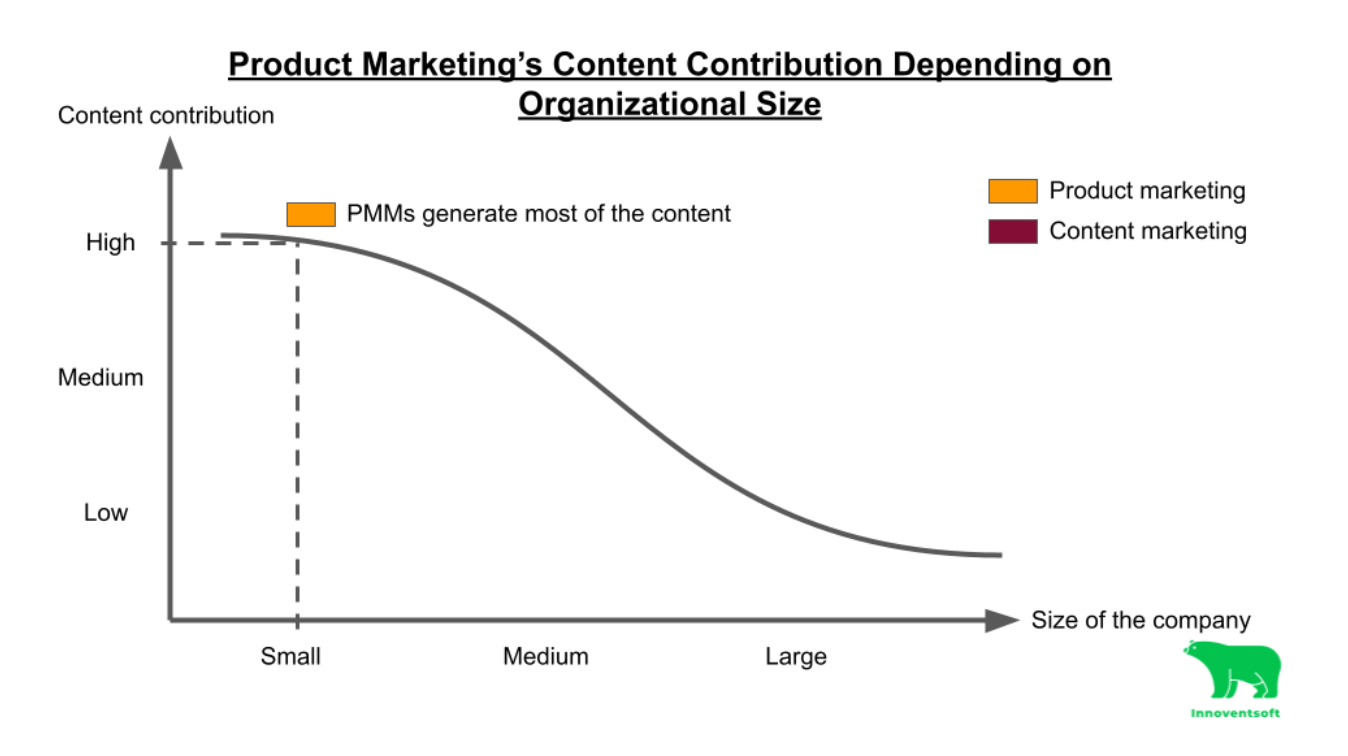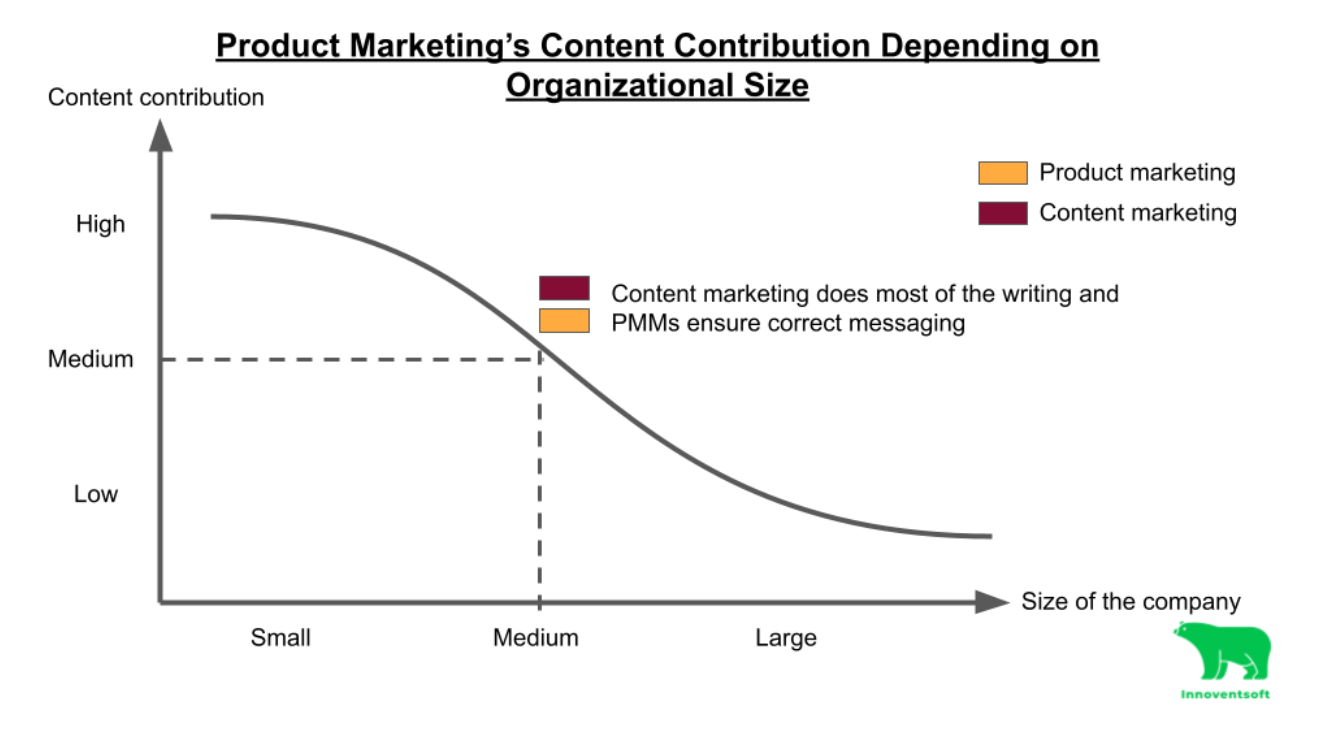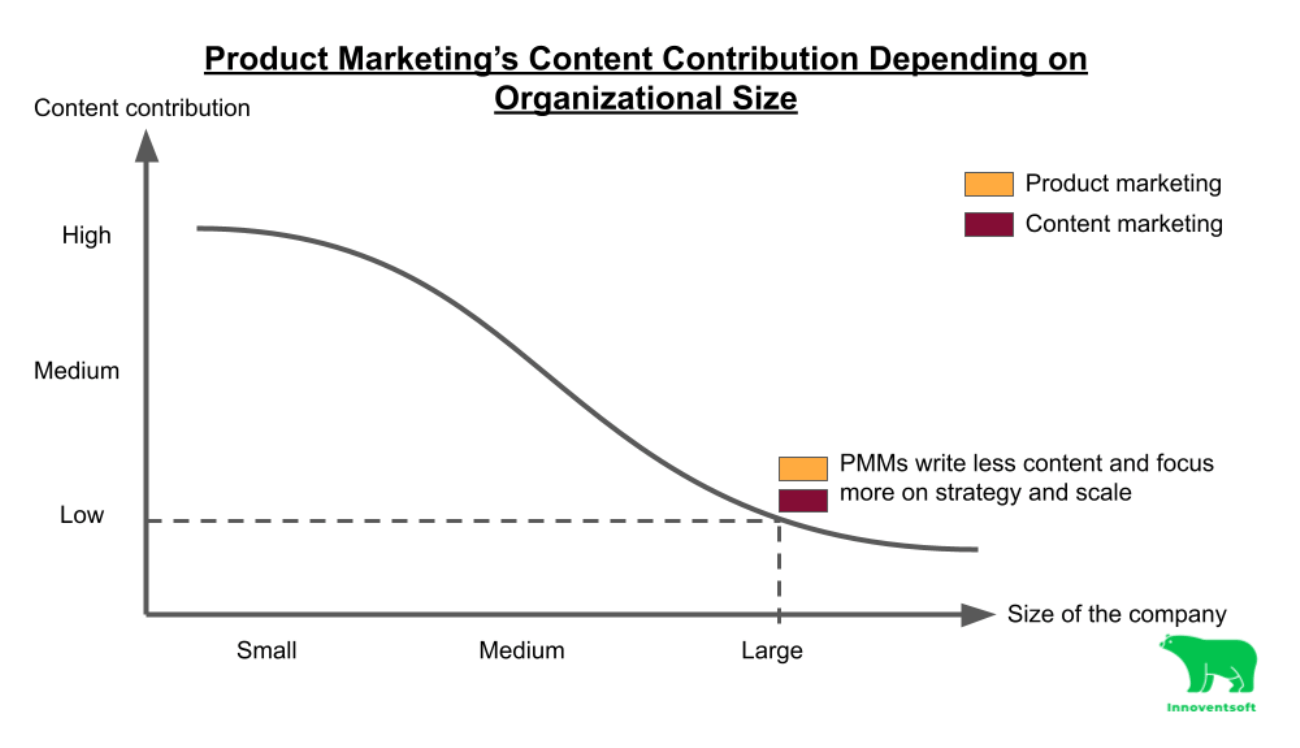When marketers rely less on paid distribution channels and focus more on creating quality content for organic growth, an obvious question looms: Who should create content, and ultimately, who should own it?
On one hand, there are product marketers uniquely positioned to create content, given their in-depth knowledge of the product, customers, competitors, and the market.
On the other hand, there are content marketers, who focus only on creating and distributing a variety of content.
To trace how much content marketing PMMs should own, I chatted with two veteran product-marketers-turned-CMOs: Cece Lee, CMO at Enable Us, and Gerardo Dada, CMO at Catchpoint.
They both held the opinion that product marketers should lead content strategy, and owning the whole of content marketing (creation and distribution) depends on the size of the organization and the availability of resources.
Let’s dive deeper into how product and content marketers contribute to content within companies at varying stages of growth, including:
- Start-up companies,
- Mid-stage companies, and
- Large organizations.
I’ll then wrap things up by explaining why content marketing and product marketing are the perfect combination.
Who owns content marketing at start-ups?
Content owner: PMM
Content executors: PMM
The goal of small organizations or startups is to drive demand generation and find product-market fit over anything else. Typically, resources would be scarce and more people would be there to build the product than market it.
In that sense—and since the focus is on catering to a small audience—PMMs would be individual contributors. Product marketers do a lot of writing when they’re the first PMM hire and dedicated writers are yet to be in place.

- When PMM is the first hire: The duty involves writing content for different stages in the funnel for demand gen and driving GTM strategy. It’s also one occasion when product marketers write non-product-related content, like top-of-the-funnel articles.
“I’ve typically been the first PMM in most of my recent organizations. As such, I’ve had to do the content writing lift until the organization was built out more.” - Cece Lee, CMO at Enable Us
2. When writers are hired: PMMs would then focus more on product-related content and thought leadership.
Content marketers attract people to the funnel and push them down, while product marketers try to convince them of the benefits of using the solution and convert them to customers. Effectively communicating the value props to leads become the primary focus of PMMs at this stage.
In startups, product marketers often act as marketing generalists, wearing multiple hats and adapting to changing situations. This may include repurposing and distributing content. But it changes when the company moves away and achieves mid-growth.
Who owns content marketing at mid-stage companies?
Content owner: PMM
Content executors: PMM, Content marketers
Mid-stage companies would’ve established product-market fit, and their goal would be to scale. To that end, more people are hired and marketing teams are more resourceful than startups.
A dedicated content marketing department is often in place at mid-stage companies, so that PMMs are eased off of creating all content by themselves. The content marketing team either reports to product marketing or they have a separate leader working in parallel with the product marketing team.

- When Content reports to PMMs: Product marketers would then review the content produced and provide feedback. It includes checking the claims made and ensuring the messaging is correct. They’d provide a baseline for content creation, which Content can use while creating assets.
PMMs also train Content on product messaging, positioning, and features, which can be painful at times.
“At one company our content team was more focused on demand-gen-related activities and training them on our product messaging was a larger lift. Sometimes, I was fighting to get their resources to work with me.” - Cece Lee
2. When Content has a separate leader: Product marketers would then cross-collaborate with the leader and mostly chime in if the content is related to solution and product messaging.
It also includes providing input on thought leadership content, primarily when it facilitates a concept that impacts the solution. The sole aim of PMMs would be to ensure a better alignment of product messaging in content.
As the company matures, the collaboration with the content marketing leader increases and product marketing shoulders more responsibilities regarding scaling further.
Who owns content marketing at large organizations?
Content owner: PMM
Content executors: Content marketers
For large organizations, the product has successfully cracked a market. The goal would be to apply the same success formula in different markets to keep growing. More PMMs with a deep understanding of the new markets and the audience would join the organization.
Product marketing’s role in large organizations would be more of a facilitator in terms of contributing to content.

- Publish clear messaging and POV documents: PMMs would ensure correct messaging by providing messaging and POV documents. They would also build a prioritized list of desired content.
Content marketing then coordinates production, including internal (maybe PMM itself) or external writers. They would design, edit, publish, and then maximize content value through SEO optimization.
Content marketing would also convert a core piece into multiple formats and lengths suitable for different channels where they are being promoted.
2. Periodic meetings: Product marketers would periodically meet with the content leader. They would review the content calendar, needs, and priorities.
“Product marketing would ensure that the content that is needed exists, that it is aligned with the messages and that it is effective. The core message for the content comes from PMM, while the design and production come from the content team.” - Gerardo Dada, CMO at Catchpoint
Looking at how product marketers contribute to content creation in companies at different growth stages, we can see that as companies become more mature product marketers are less involved in content creation. However, they always act as the guardians of messaging.
Content marketing and product marketing: The perfect combination
Product marketing has a significant impact on content marketing, as the strategy and messaging come from PMMs. Depending on the needs, they draft content as well.
However, for PMMs to own repurposing and distributing content, they also need to own demand generation.
Similarly, while product marketing ensures the messaging across all the content, content marketing creates and distributes content to drive traffic. That way, every piece of content tells the unique brand story, providing a unified voice to the customers.
For a well-rounded product marketing strategy, it’s crucial to have product and content marketing teams aligned and working towards the same goal: to provide a great customer experience. It will help the target audience transition smoothly from top to bottom of the funnel and ensure a healthy sales pipeline.
How to improve product messaging
Whether you own the messaging process yourself, or whether it's shared with other teams, there's no disputing it's a core part of product marketing, and you need to knock it out of the ballpark.
Built alongside messaging experts from the likes of Remote and Amazon Web Services, Product Messaging Certified will help you create compelling messaging that communicates your product's true value.
📙 Learn messaging essentials with intel spread across 6 modules
📝 Refine your understanding of key concepts with 80+ exam questions
⏰ Access a comprehensive curriculum spanning 4 hours of content
🔖 Differentiate yourself in the talent pool with an official certification
👨🏼💻 Learn at a time to suit you, with 100% self-paced tuition
Don't leave your messaging to chance.
Content is King, after all. 🤷♂️


















 Follow us on LinkedIn
Follow us on LinkedIn



.svg?v=1461f28f41)